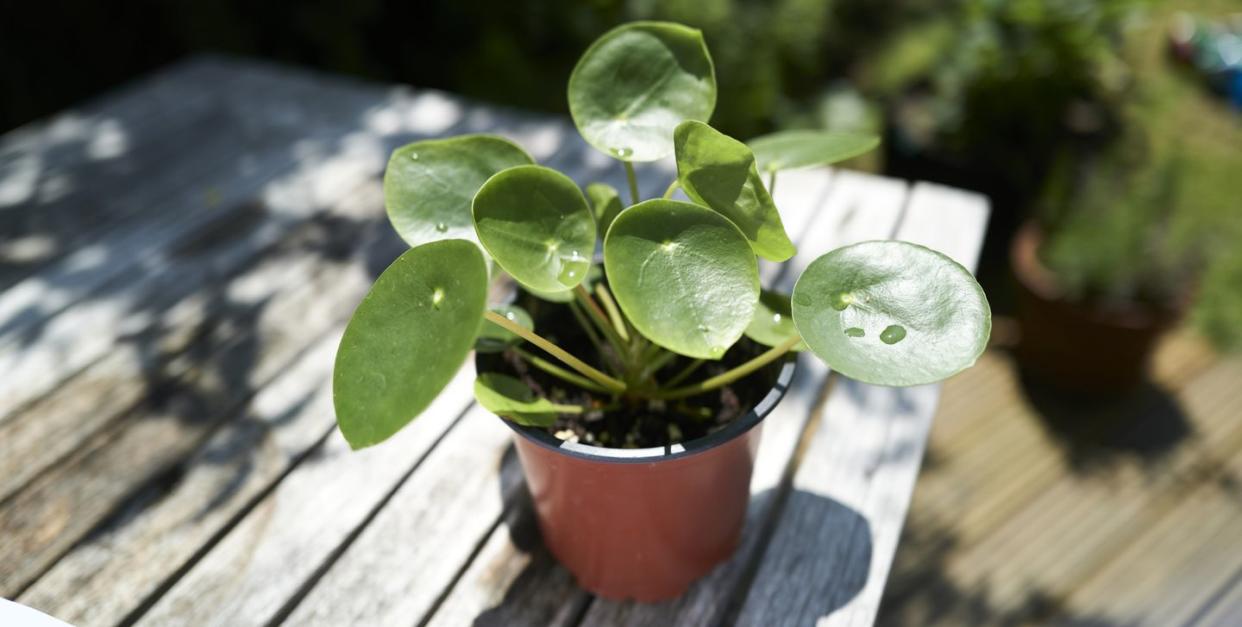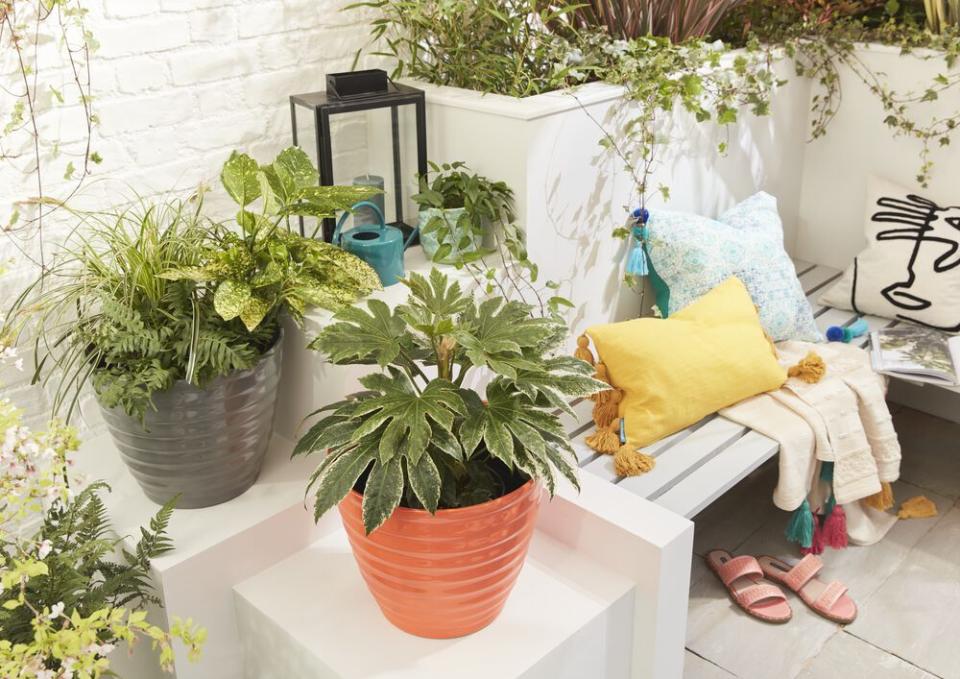How to move your houseplants outdoors without killing them

During the sunnier summer months, many of us have considered moving our houseplants into our garden or outdoor space, and there are benefits to giving them a change of scenery for a few months.
From increased levels of natural light, to the odd summer shower washing off any dust that has accumulated, it can be nice to take advantage of the warm weather when you can. However, there are some things to consider before you move your houseplants outside.
Angela Slater, gardening expert at Hayes Garden World, shares her top tips and best practices for moving any houseplant outdoors during the warmer months.

1. Place your houseplants in a shaded area
Don't place your houseplants in the middle of the garden as overexposure to the sun can scorch the leaves. Instead, you should look for a shaded spot where they can still receive some early morning or late evening sun.
If you have trees in your garden, placing your houseplants underneath them is an ideal solution, or you can create your own canopy with shade netting from the garden centre.
“Remember, only cacti or succulents will be able to manage the midday sun,” says Angela.
2. Stand them in a tray filled with wet gravel
“A lot of our houseplants are from the tropics; in their natural habitat they usually grow on the margins of the forest where they benefit from the trees' shade and the humid microclimate they produce. To replicate this environment, you should stand your plants on a tray filled with wet gravel,” says Angela.
3. Take precautions against pests
Once outside, your houseplants are more susceptible to being attacked by pests, so it's wise to take some additional precautions.
Checking regularly for pests like caterpillars and slugs is key. If your garden is more susceptible to caterpillars, place your house plants high up on a bird table, and to avoid slugs, stand your plants on a bed of sharp gravel. Crushed beech leaves and bran have also been said to provide an effective deterrent for slugs.

4. Keep your houseplants together
“Group your houseplants together to create a little microclimate where they all benefit,” says Angela. “This way they will require less water and larger plants can provide a little shade for the smaller plants.”
5. Make sure your houseplants are watered when you are away
It’s important to plan ahead when you go on holiday. If you don't have a neighbour who can pop into your garden to water your houseplants, you might need to get a bit more creative.
Invest in an automatic drip feed watering system, which will reduce the amount of water that you use and keep your plants watered while you’re away. Alternatively, you can place all of your plants into a large tray filled with water – just remember that this may only be suitable if it’s not too warm or humid.
You Might Also Like

